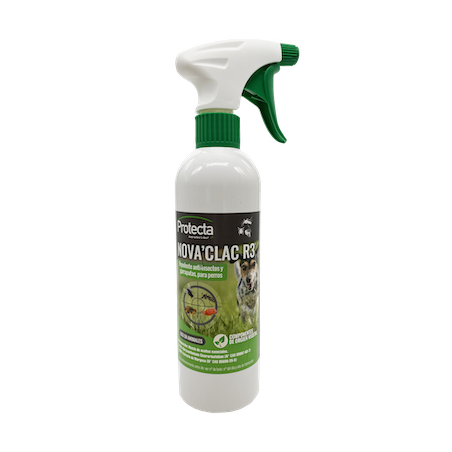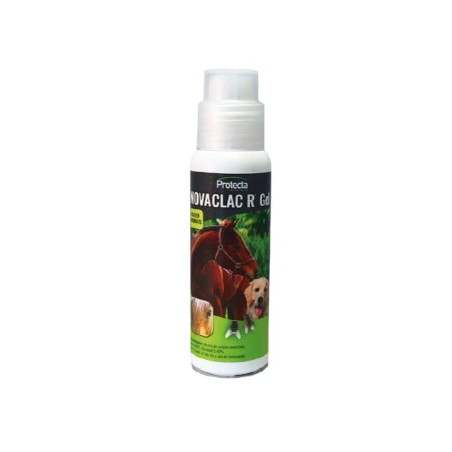One of the most severe viral diseases of pigs, African swine fever (ASF) is caused by a huge double-stranded DNA virus that codes for over one hundred genes. The virus in Africa naturally circulates among wild suids (e.g. warthogs, bushpigs and giant forest hogs) that do not show clinical signs. Feral pigs (escaped domestic species) and European wild boar are equally susceptible to ASF, which shows no age or gender preference. Humans are not susceptible to infection by the ASF virus (ASFV). ASF is transmitted mainly through the oro-nasal route after contact with excretions from infected pigs or through ingestion of pork or other contaminated products (swill and waste) containing the virus. To complicate matters further, in those areas with the presence of competent Ornithodoros soft ticks (also known as tampans), transmission via these vectors can hugely influence virus persistence and complicate eradication efforts.
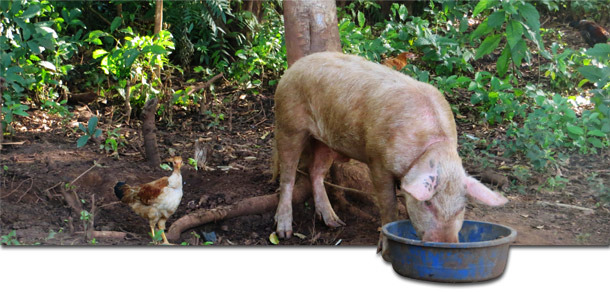

Backyard pig in Gulu, Uganda, where ASF outbreaks regularly occur.
In a suitable protein-rich environment, the ASFV is stable over wideranges of temperatures and pHs. This means that putrefaction, the meat maturing process and freezing do not inactivate the agent. Consequently, the virus survives in excretions, carcasses, fresh meat and certain meat products; for example, ASF virus may remain infective for at least 11 days in faeces, for months in bone marrow, for 15 weeks in chilled meat (and probably longer if frozen), and for three to six months in cured hams and sausages that have not been cooked or smoked at a high temperature. This has very important implication for the spread of ASF. Undercooked, dried, smoked and salted pork, blood, carcasses and carcass meal are potentially infective if fed to pigs and/or discarded in communal waste sites where pigs may feed. Cooking at 60C° for 30 minutes inactivates the virus.
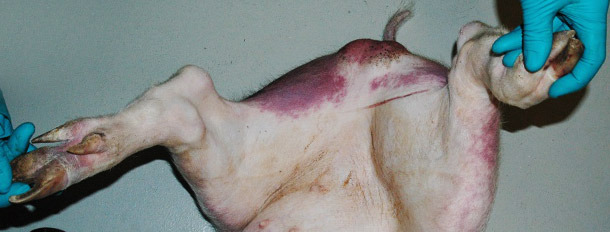
Reddening and cyanosis in hind legs.
Source: Carmina Gallardo - EURL (CISA-INIA)
ASF virus strains differ in virulence and can lead to a whole range of presentations, from peracute to chronic forms. There is also a variety of clinical signs, mostly those typical of a haemorrhagic fever with multiple organ involvement. Some genotypes, such as the genotype II currently circulating in Easter Europe, provoke high mortality rates of up to 100% in domestic pigs and wild boar. Clinical signs appear after an incubation period that varies from 5 to 15 days. The development of high fever (>40°C) is usually the first clinical sign, which is accompanied by depression and loss of appetite. Other clinical signs include redness of the skin of the ears, abdomen and legs, respiratory distress, vomiting, bleeding from the nose or rectum and diarrhea, and death in 2 to 10 days. Abortions are also reported often. Necropsy findings are characterized by haemorrhages in internal organs, particularly in lymph nodes, spleen and kidneys. Less virulent forms of the virus produce less intense symptoms. In pigs that survive the infection, the viraemia can persist for weeks (up to six months), and recovered animals present a risk since the virus has been isolated from tissues. It is important to stress that, from clinical examination, ASF can only be suspected as several diseases can produce similar clinical signs, most importantly classical swine fever (CSF), but also erysipelas, salmonellosis, septicaemic pasteurellosis and other bacterial septicaemias, poisoning, etc. Therefore, a final diagnosis can only be done through laboratory testing by the detection of the virus and/or the antibody.
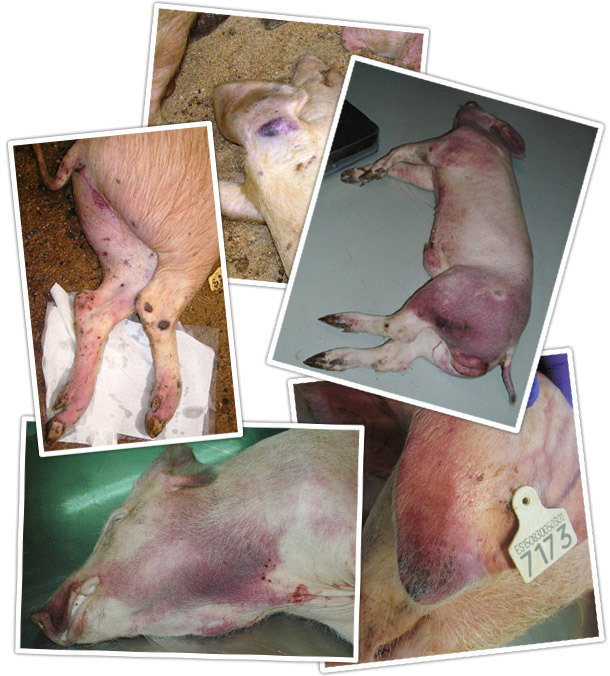
Reddening and cyanosis of the skin: tips of ears, chest, abdomen and both front and hind legs.
Source: Carmina Gallardo - EURL (CISA-INIA)
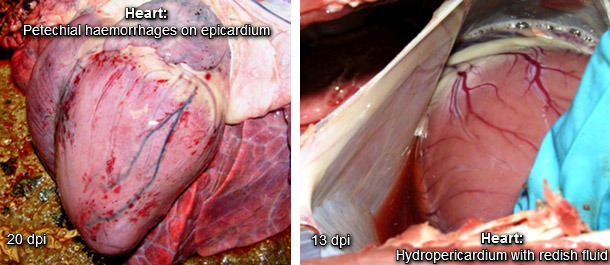
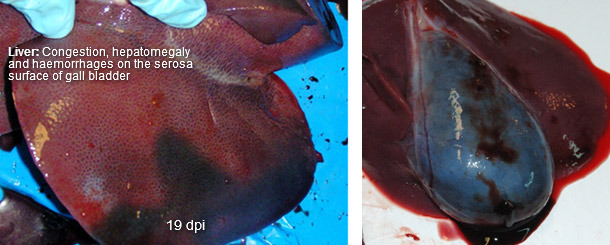
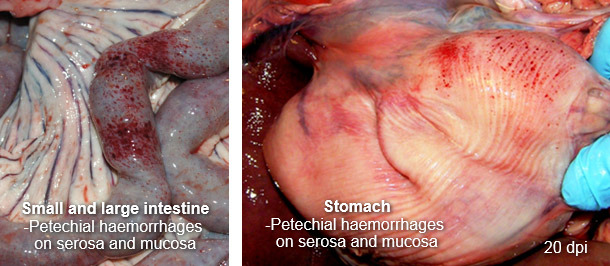
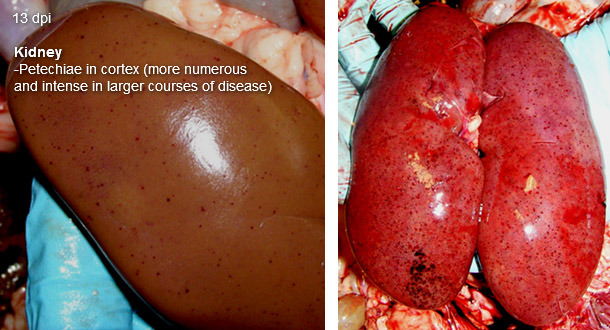
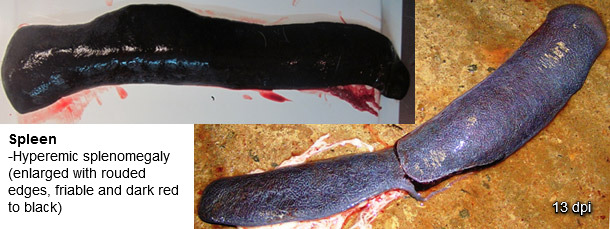

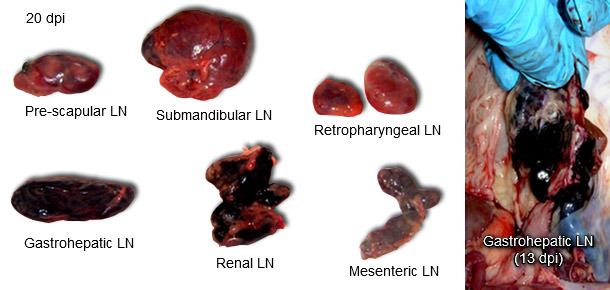
Source: Carmina Gallardo - EURL (CISA-INIA)
All of the currently 22 genotypes identified circulate in Sub-Saharian Africa, where ASF is considered endemic in most countries. Still, within Africa, the disease is generally on the rise and spreading into previously unaffected areas, driven by the huge growth of the pig sector. The virus was already detected outside Africa from the 1950s to the 1980s in Europe, the Caribbean and Brazil, from where it was successfully controlled, with the exception of the Italian island of Sardinia, where it still persists. However, since its introduction into Georgia in 2007, from where it spread quickly throughout the Caucasus (Armenia and Azerbaijan) into the Islamic Republic of Iran, the Russian Federation and, in the past two years, the disease has progressively spread westwards, entering first Ukraine and Belarus, and most recently, into the European Union (i.e. Lithuania and Poland). The involvement of wild boar further complicates ASF control, although the extent of its epidemiological role remains to be clearly defined. One can conclude that ASF is now firmly (i.e. endemic) established in some areas of the Caucasus and Eastern Europe, where it is causing considerable trade disruptions, plus having a devastating impact on small-scale pig farmers.
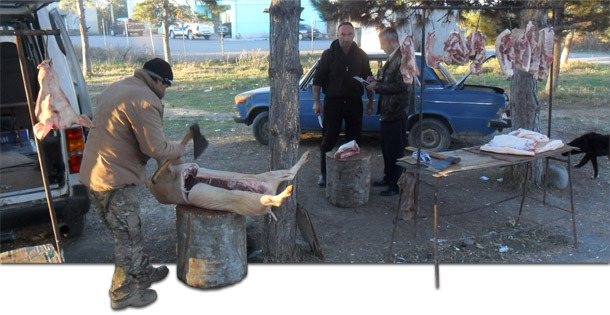
Traditional butcher in Georgia






